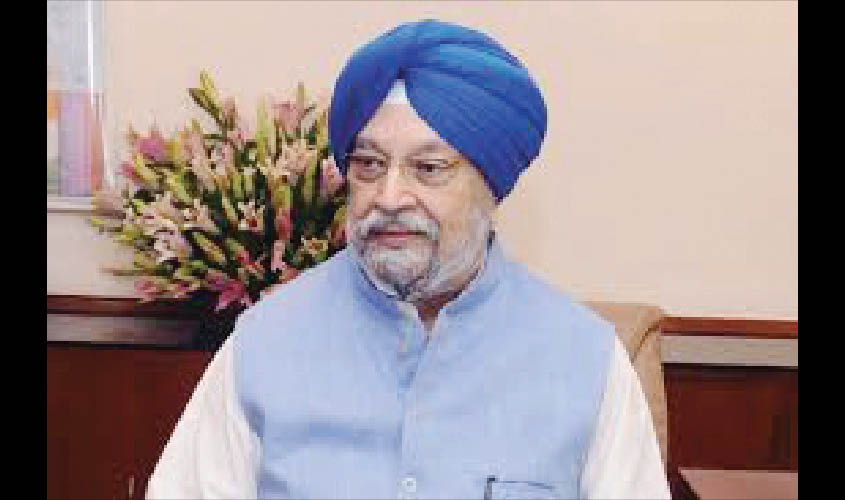Minister Hardeep Singh Puri wants states to achieve 100% completion of projects by end of this year.
New Delhi: Unhappy with the slow pace of completion of projects under the Centre’s Atal Mission for Rejuvenation and Urban Transformation (AMRUT), Minister of Housing and Urban Affairs Hardeep Singh Puri has directed all states to speed up work to achieve 100% target for completion of projects by the end of this year.
With one more year to meet the target, AMRUT, a mission meant for developing urban infrastructure, has seen completion of just around 30% of the total projects mandated in the Detailed Project Report (DPR).
According to Ministry of Housing and Urban Affairs (MOHUA) data, total 6,049 projects were approved under the AMRUT scheme, out of which only 1,833 projects have been completed so far by utilising only 6% (Rs 4,744 crore) of total funds allocated for the scheme, that is Rs 77,640 crore.
After Puri’s interference, contracts for 3,152 projects worth Rs 61,349 crore have been awarded and work is in progress. Tenders for another 312 projects worth Rs 8,306 crore have also been released. As per a source, Puri has asked all the states to complete AMRUT projects on a priority basis.
“A letter directing that serious steps be taken to ensure speedy completion of work under the AMRUT scheme has been sent to all the state governments. This month (August) again, the minster has sent a reminder on this issue,” a source in the MOHUA told The Sunday Guardian.
Under the AMRUT scheme, Tamil Nadu ranked first in completion of designated projects, while states like Bihar and Assam have so far not picked up pace and have completed only a few projects, as per MOHUA data. West Bengal has also completed most of the projects and states like Gujarat, Andhra Pradesh and Kerala performed well and have completed more than 50 projects, according to MOHUA data.
MOHUA has also stressed on the use of geospatial database for all AMRUT cities—for this National Remote Sensing Centre (NRSC) and Indian Space Research Organisation (ISRO) are working closely and helping the ministry in creating geospatial databases. The database will help in the formulation of GIS-Based Master Plan for AMRUT cities.
“A database is being generated at 1:4,000 scales in collaboration with state governments and other agencies at NRSC, to ensure up-to-date database and thematic maps for master plan preparation. Earth Observation Satellites of ISRO have been successfully able to establish many operational applications in the country. Both at Central and state levels, there are a large number of users who utilise space-based inputs for various purposes,” the same source cited above said.
Geospatial technologies, remote sensing, satellite communication, and navigation systems are providing many new ways for effective management of natural resources. This has resulted in enabling a variety of data and information products for societal benefits and also helping planners and decision-makers to embark on unique people-centric services. Web geoportals and mobile technologies (Bhuvan Geoportal) are the other popular platforms, being used by governments for the implementation of AMRUT schemes, to provide information services and solutions at all levels, which are proving to be effective.
During its first stint, the Prime Minister Narendra Modi-led Central government launched the AMRUT scheme in 2015 to cover 500 cities with a focus on water supply, sewerage and seepage management, drainage, and development of green space and parks. The mission will end in 2020.
Projects under AMRUT are selected, appraised, approved and implemented by the state governments and the Center only approves the state annual action plans (SAAPs) that are submitted by state governments and releases assistance as per the mission guidelines.

